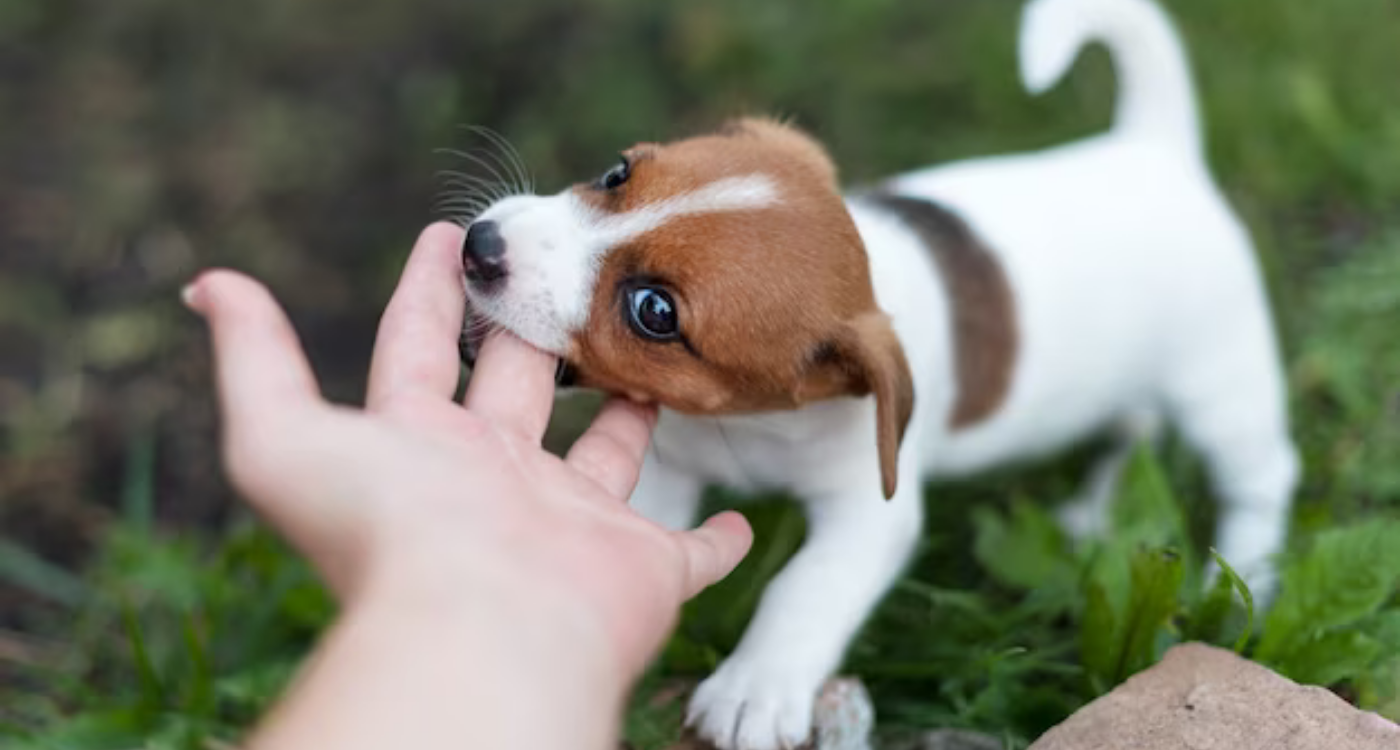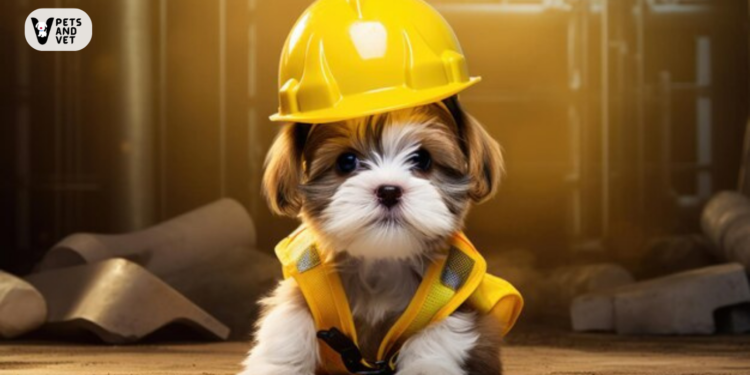Puppy-proofing is the process of making your home safe for a new puppy. Puppies are curious and playful, and they can get into all sorts of trouble if they’re not supervised. Puppy-proofing helps to prevent accidents and injuries, and it can also make your life easier as a new puppy owner.
Why is Puppy-Proofing Important?
Puppies are curious and playful, and they love to explore. This can lead them to get into all sorts of trouble, such as chewing on electrical cords, eating poisonous substances, or getting into dangerous areas of the house. Puppy-proofing helps to prevent these accidents and injuries, and it can also make your life easier as a new puppy owner.
Puppy-proofing is crucial for ensuring the safety and well-being of your new family member. It helps prevent accidents by creating a safe environment that minimizes the risk of accidents, as puppies are curious and may explore their surroundings. Puppy-proofing also helps prevent toxicity by identifying and removing hazards from common household items, plants, and foods.
Establishing a puppy-friendly space with appropriate boundaries and training helps shape positive behavior and fosters a sense of security. A well-puppy-proofed home contributes to the long-term health and wellness of your pet by eliminating potential dangers and reducing the likelihood of injuries or health issues.
It also promotes mental stimulation by providing suitable toys and outlets for mental stimulation, preventing boredom and preventing destructive behavior. Establishing a safe Haven allows you to create specific safe zones for your puppy, promoting their mental well-being and providing a retreat when needed.
Benefits of Puppy-Proofing
There are many benefits to puppy-proofing your home. Some of the most important benefits include:
- Preventing accidents and injuries: Puppy-proofing can help to prevent your puppy from getting into dangerous situations, such as chewing on electrical cords, eating poisonous substances, or getting into stairs.
- Making your life easier: Puppy-proofing can make your life easier as a new puppy owner by reducing the amount of time you spend cleaning up after your puppy and by preventing accidents.
- Creating a safe and comfortable environment for your puppy: A puppy-proofed home is a safe and comfortable environment for your puppy to explore and grow.
Step 1: Remove Hazards
The first step in puppy-proofing your home is to remove any potential hazards. This includes:
- Electrical Cords: Puppies love to chew on electrical cords, which can be dangerous. Hide all electrical cords away from your puppy’s reach, or use cord covers to make them less appealing to chew on.
- Cleaning Supplies: Cleaning supplies can be poisonous if ingested by puppies. Store all cleaning supplies in high cabinets or out of reach of your puppy.
- Medicines: Medicines can also be poisonous if ingested by puppies. Keep all medicines in their original containers and store them in a safe place, out of reach of your puppy.
- Chemicals: Puppies are curious and will often sniff and lick things. Keep all chemicals, such as fertilizers, pesticides, and paints, in a safe place, out of reach of your puppy.
- Breakables: Puppies are clumsy and can easily knock over breakables. Put away any breakables that your puppy could knock over, or put them in a secure cabinet.
- Small Objects: Puppies can choke on small objects, such as coins, beads, and small toys. Put away any small objects that your puppy could choke on.
- Furniture Corners: Furniture corners can be sharp and can injure your puppy’s paws. Cover any sharp furniture corners with protective tape or padding.
- Stairs: Puppies can fall down stairs, which can be dangerous. Gate off the stairs or use a baby gate to prevent your puppy from accessing them.
- Balconies and Windows: Puppies can easily fall off balconies and windows, which can be fatal. Make sure that all balconies and windows are properly secured, and that your puppy cannot access them.
Step 2: Secure Areas

Once you have removed any potential hazards, you need to secure any areas of your home that you don’t want your puppy to access. This includes:
- Kitchen: The kitchen is full of potential hazards for puppies, such as stovetops, ovens, and knives. Gate off the kitchen or use a baby gate to prevent your puppy from accessing it.
- Bathroom: The bathroom is another area of the home that is full of potential hazards for puppies, such as cleaning supplies, medications, and electrical cords. Gate off the bathroom or use a baby gate to prevent your puppy from accessing it.
- Laundry Room: The laundry room is another area of the home that is full of potential hazards for puppies, such as laundry detergent, bleach, and electrical cords. Gate off the laundry room or use a baby gate to prevent your puppy from accessing it.
- Garage: The garage is another area of the home that is full of potential hazards for puppies, such as tools, gasoline, and poisonous substances. Gate off the garage or use a baby gate to prevent your puppy from accessing it.
- Basement: The basement is another area of the home that is full of potential hazards for puppies, such as mold, mildew, and poisonous substances. Gate off the basement or use a baby gate to prevent your puppy from accessing it.
- Other Rooms with Potential Hazards: If you have any other rooms in your home that you don’t want your puppy to access, you can gate them off or use a baby gate to prevent your puppy from entering.
Step 3: Gate off Areas
In addition to securing certain areas of your home, you may also want to gate off other areas that you don’t want your puppy to access, such as:
- High-traffic Areas: Puppies can be easily injured if they are running around in high-traffic areas. Gate off high-traffic areas to prevent your puppy from running around unsupervised.
- Areas with Valuable or Fragile Items: Puppies can be destructive and may damage valuable or fragile items. Gate off areas with valuable or fragile items to prevent your puppy from accessing them.
- Areas Where the Puppy Shouldn’t be Unsupervised: There may be certain areas of your home where you don’t want your puppy to be unsupervised, such as the backyard or the garage. Gate off these areas to prevent your puppy from accessing them unsupervised.
Step 4: Provide Safe Spaces
It is important to provide your puppy with safe spaces where they can feel comfortable and secure. This could include:
- Crate: A crate can be a great safe space for your puppy. It provides them with a place to retreat to when they are feeling overwhelmed or scared.
- Dog bed: A dog bed provides your puppy with a comfortable place to sleep and relax.
- Playpen: A playpen can be a great way to contain your puppy in a safe space while you are supervising them.
- Other areas where the puppy can feel safe and comfortable: You may also want to designate other areas of your home as safe spaces for your puppy, such as a corner of the living room or a quiet room.
Step 5: Train The Puppy
In addition to puppy-proofing your home, it is also important to train your puppy to stay away from hazards and to obey commands. This will help to keep your puppy safe and prevent accidents from happening.
Some basic commands that you should teach your puppy include:
- Come: This command will help you to call your puppy back to you if they wander off.
- Stay: This command will teach your puppy to stay in one place until you give them permission to move.
- Leave it: This command will teach your puppy to ignore something that they are interested in, such as a toy or a piece of food.
You can also teach your puppy specific commands related to hazards in your home, such as:
- No cords: This command will teach your puppy to avoid chewing on electrical cords.
- No chemicals: This command will teach your puppy to avoid eating or sniffing chemicals.
- No stairs: This command will teach your puppy to stay away from the stairs.
By puppy-proofing your home and training your puppy, you can help to keep them safe and prevent accidents from happening.
Conclusion
To keep your puppy safe, closely supervise them, especially when they are young and curious. Be aware of their chewing habits, such as putting away chewable items like shoes, furniture, and electrical cords. Clean up any messes immediately, as they can easily get sick from eating or sniffing dirty things. Take your puppy for regular vet checkups to ensure their health and vaccinations. By following these tips, you can help keep your puppy safe and healthy.
We’d love to hear your thoughts or stories in the comments. For more insights, visit PetsandVets





